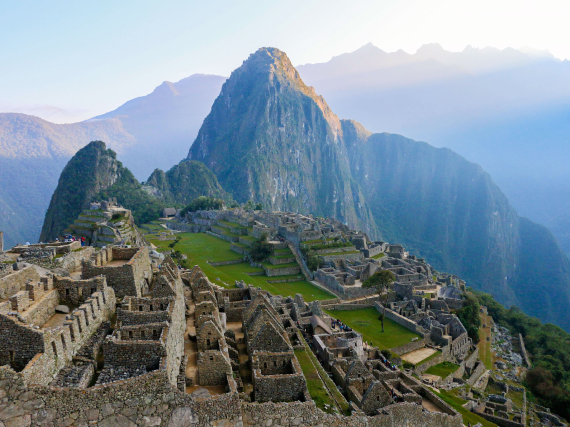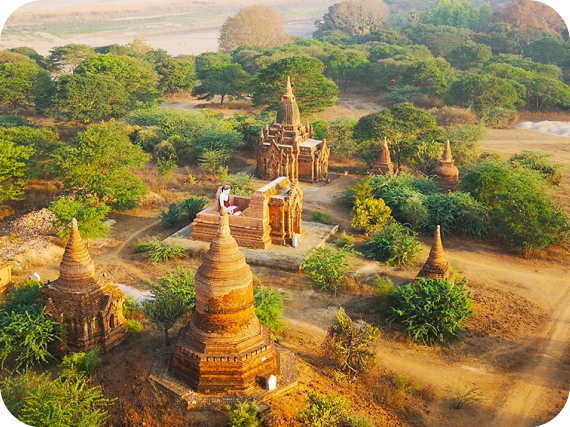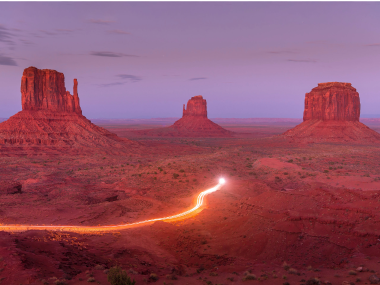Africa, the planet’s second-largest continent, is home not only to some of Earth’s most important ecosystems and jaw-dropping natural scenery, but also millions of years of human history — the earliest human fossils originated on the continent. While narrowing down a list of Africa’s must-visit destinations is no easy task, here are 10 beautiful places in Africa to add to your bucket list.
Blyde River Canyon – South Africa

The travelers who only talk safaris when they get home from South Africa probably didn’t make it to the glorious Blyde River Canyon — or they’d never stop raving about it. Located in the northeast of South Africa’s Mpumalanga province, it is the third-largest canyon in the world, behind Arizona’s Grand Canyon and Namibia’s Fish River Canyon. But unlike those arid landscapes, the 16-mile-long canyon is draped in impossibly green vegetation and dramatic waterfalls — making it Earth’s largest “green canyon.”
Up close, it’s difficult to grasp just how massive the canyon truly is (the average depth is over 2,400 feet), but a good place to start is the Panorama Route that winds through the surrounding natural reserve. If you’re feeling even more adventurous, hire a guide and explore the canyon on foot by following the multi-day Blyde Canyon Hiking Trail. Once it’s all over, we warned you: You won’t stop kvelling about the multi-sensory spectacle of your visit.
Serengeti National Park – Tanzania
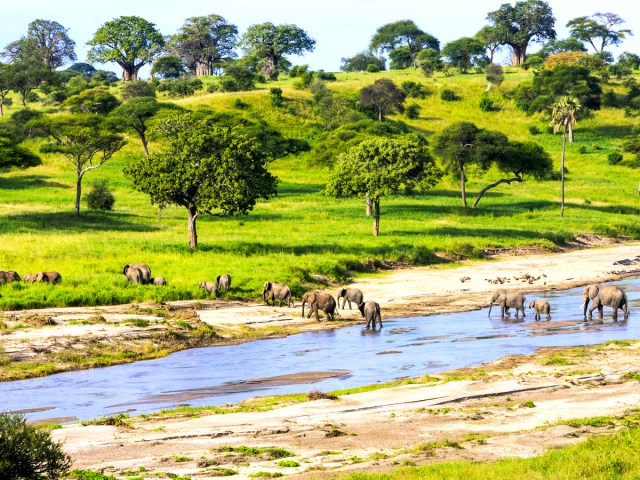
Although the term “Big Five” was originally coined by game hunters in Africa, these days the lion, leopard, black rhinoceros, African bush elephant, and African buffalo are chased by shutterbugs on safaris who are eager for a glimpse (and the perfect photo) of the continent’s most majestic creatures. There’s perhaps no better place to see them all than northern Tanzania’s Serengeti National Park.
Named a UNESCO World Heritage Site in 1981, the park is bigger than the state of Connecticut and teems with wildlife, including more than 2 million ungulates — hoofed mammals such as wildebeest, zebras, rhinos, giraffes, hippos, buffalo and antelopes. From May to July, a million wildebeest trek annually in a breathtaking 500-mile spectacle known as the Great Migration, crossing crocodile-infested rivers with their young in groups that can stretch for 20 miles.
And as long as you’re already in Tanzania, don’t miss a side trip to marvel at Ngorongoro Crater. Nicknamed Africa’s “eighth wonder of the world,” it formed when a massive volcano erupted and then collapsed about 2.5 million years ago. It’s the largest intact volcanic caldera on the planet and also home to the world’s densest concentration of lions.
Tsavo National Park – Kenya
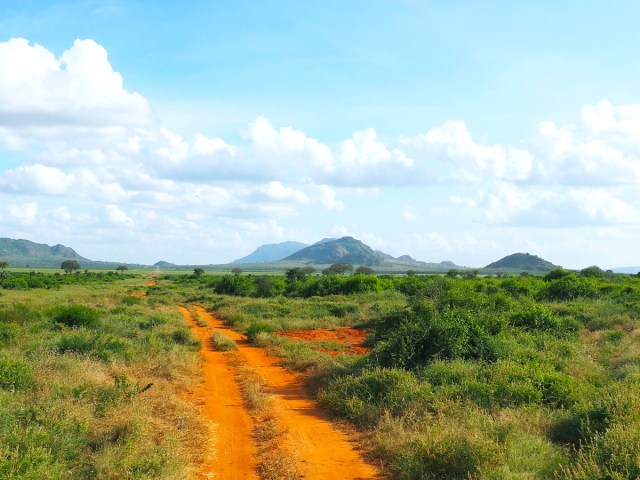
Another option to see the Big Five is the lesser-known Tsavo National Park. This 8,000-square-mile wildlife preserve in Kenya’s Taru Desert is teeming not just with those extraordinary animals, but also gazelles, zebras, and hippos — not to mention birds and lots of smaller creatures.
The park’s African elephants are sometimes referred to as “red elephants” because of the red savannah dust that gets caked on their gray-black hides. The park’s alpha predator, too, has a Tsavo-specific name — they’re known as “man-eating lions” because of the number of workers who met their untimely death by lion while building the railroad line that divides the east and west sides of the park.
The massive park is made up of the two very different sections. Tsavo East is mostly semi-arid savannah land — plains of golden grasses broken up by the occasional acacia or baobab tree — while Tsavo West is more rugged and mountainous, filled with grasslands, mountain springs, ash cones, lava fields, and volcanic craters. For visitors, the park’s interior offers several appealing safari lodges and tented camps, so you can experience its grand variety of wildlife up close and personal.
Victoria Falls – Zambia and Zimbabwe
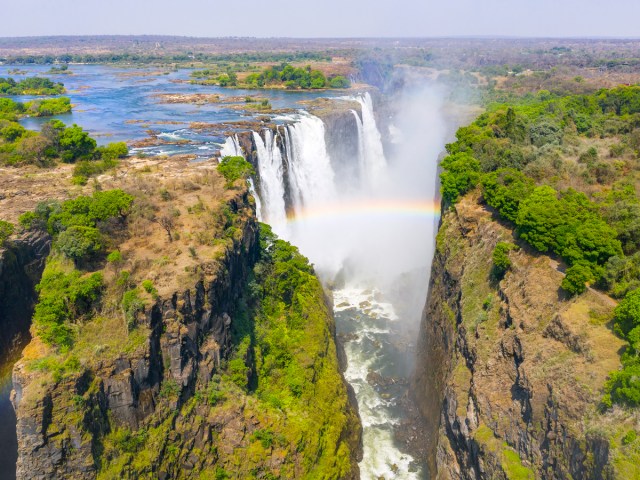
At the border between Zambia and Zimbabwe, about midway through the course of the Zambezi River, one of the world’s most spectacular waterfalls roars. Victoria Falls, one of Africa’s most beautiful places, is more than a mile wide and drops 355 feet at its maximum, making it about twice as wide and deep as Niagara Falls. British explorer David Livingstone gave the falls their English name after he became the first European to see them in 1855.
But the local Kalolo-Lozi people call the spot Mosi-oa-Tunya, or “The Smoke That Thunders,” because of the loud roar and large veil of iridescent mist the falls create. The mist can be seen more than a dozen miles away. UNESCO, which designated the falls a World Heritage Site in 1989, calls the site “the largest curtain of falling water in the world.”
Sossusvlei – Namibia
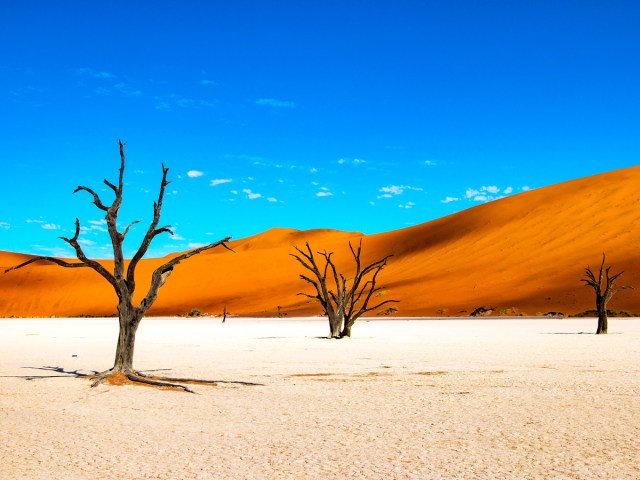
Southwestern Namibia is home to some of the world’s tallest sand dunes — windswept, rust-colored giants that tower as high as 1,200 feet above the scorched earth of the Namib Desert. The dunes are part of the planet’s oldest desert — estimated to date back 55 million years — and wrap around a 12,000-square-mile salt and clay pan known as Sossusvlei.
Translating to “dead-end marsh,” Sossusvlei sprawls at the furthest reaches of the Tsauchab River, where the dunes come together to stop its flow just 37 miles short of the Atlantic Ocean. It is part of one of Africa’s largest conservation areas — the Namib-Naukluft National Park — and one of Namibia’s most sought-after natural attractions.
Part of what makes the view so remarkable is that the empty pan accentuates the height of the sand dunes surrounding it. Area winds blow from every direction, causing the undulating dunes to shift and erase ostrich, springbok, and hyena footprints, while concealing thirsty camel thorn tree roots that extend hundreds of feet below ground. The most popular dune to visit is Dune 45, which stands roughly 278 feet tall and can be climbed in about an hour.
Chefchaouen – Morocco
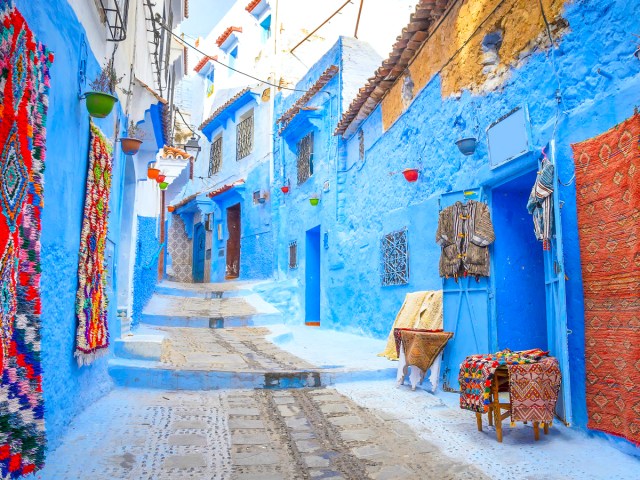
Chefchaouen, a city high in the Rif Mountains of northwest Morocco, is called the “Blue City” or “Blue Pearl” for reasons that become clear the instant you arrive. The kasbah — a walled perimeter once used as a fortress to protect against Portuguese crusaders — is painted an enchanting spectrum of every shade of blue imaginable.
The town is no longer confined by the kasbah, yet neighboring homes, mosques, and government buildings have adopted the striking palette as well. Cerulean-washed walls cool the steep and narrow streets, and the many cobalt-stained doors and windows, turquoise flower pots, and lapis stone steps only add to the city’s enchanting appeal.
Some say the local hue — which holds spiritual significance in Judaism — is a contribution of Jewish refugees who settled here during the Spanish Inquisition. The area began to attract attention as part of a popular backpacking circuit in the 1960s, and has exploded in popularity during the Instagram age. Some places are unbelievably better in person than in photos, however — and Chefchaouen is surely one of them.
Karnak – Egypt
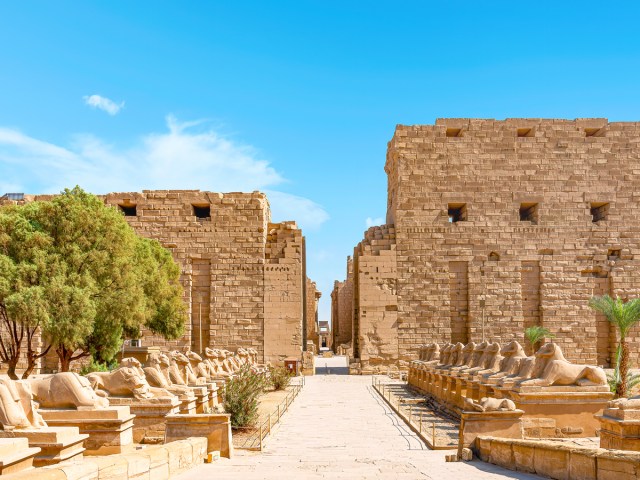
Karnak is one of those places that will look familiar to cinephiles. Seemingly every franchise, from James Bond to Hercule Poirot, has filmed amongst these ancient Egyptian temple ruins — most notably in the late 1970s, when Mia Farrow, Maggie Smith, Bette Davis, and Angela Lansbury set sail aboard the S.S. Karnak in Death on the Nile, and Roger Moore played high-stakes hide and seek here in The Spy Who Loved Me.
But about 4,000 years before Hollywood location scouts hit the scene, worshippers of Amon (king of the ancient Egyptian gods), Mut (his wife, believed by some to have birthed the world), and Mont (a war god) were busy building places to venerate these and other deities at Karnak.
Pharaoh after pharaoh wanted to leave his mark on this section of Thebes — once the capital of Egypt — on the east bank of the Nile River, so the pylons, colonnades and temples were consistently being reworked, leaving behind a dazzling melange of materials and styles. The ruins were eventually designated a UNESCO World Heritage Site in 1979. Visitors today will find the ancient site vast, awe-inspiring — and yes, eminently cinematic.
Avenue of the Baobabs, Madagascar
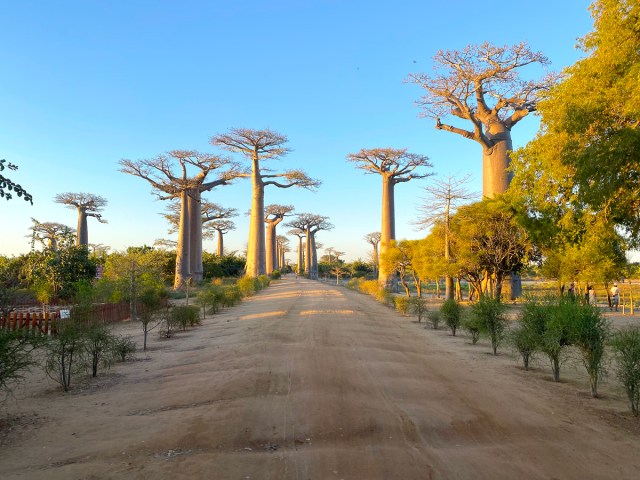
Approximately 90% of the plant and animal life on the island nation of Madagascar cannot be found anywhere else in the world. That includes six species of majestic baobab trees, also known as the “tree of life” or the “upside-down tree.” And there’s no better place to gaze up at these thick-trunked trees and their short, wispy branches than a dirt road along the island country’s western coast, about 10 miles from the Morondava Airport.
Known as the Avenue of the Baobabs, this stunning stretch slices through a cluster of 20 or so of the largest variety of baobabs, Adansonia grandidieri, which can grow up to 100 feet tall and 30 feet wide. Several trees on the Avenue of the Baobabs are estimated to be more than 800 years old. Each one blooms for just 24 hours, between June and August, attracting fruit bats with their nectar.
Unfortunately, the avenue is a small remnant of what was once a forest of baobabs, until deforestation and modern development drastically reduced their number. It’s now protected by private organizations and conservation groups are working to make it Madagascar’s first national monument.
Gondar – Ethiopia
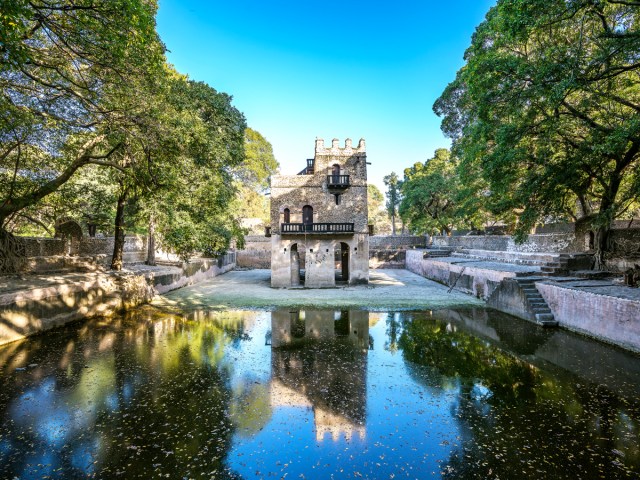
In one of the world’s oldest nations — home to some of the earliest fossilized remains of homo sapiens — lies the city of Gondar (also spelled Gonder). Known as the “Camelot of Africa,” this former capital of the Abyssinian empire is high in the Amhara region, near Lake Tana (the country’s largest body of water) and the breathtaking Simien Mountains National Park.
The medieval city was founded by Emperor Fasilides, who embarked on the construction of a grand new capital while turning away from European influences and leading Ethiopia into a centuries-long period of isolation.
Gondar contains the fortress city of Fasil Ghebbi, a UNESCO World Heritage Site where Fasilides and subsequent rulers built fairy-tale palaces. An important religious center for the Ethiopian Orthodox Church, Gondar at one time contained as many as 44 churches — including the 17th-century Debre Berhan Selassie Church, which features an elaborately frescoed ceiling decorated with the faces of 135 cherubs. Fasilides’ private bath is well-preserved, and the large pool is still in use during the Orthodox Epiphany festival of Timkat.
Table Mountain – South Africa
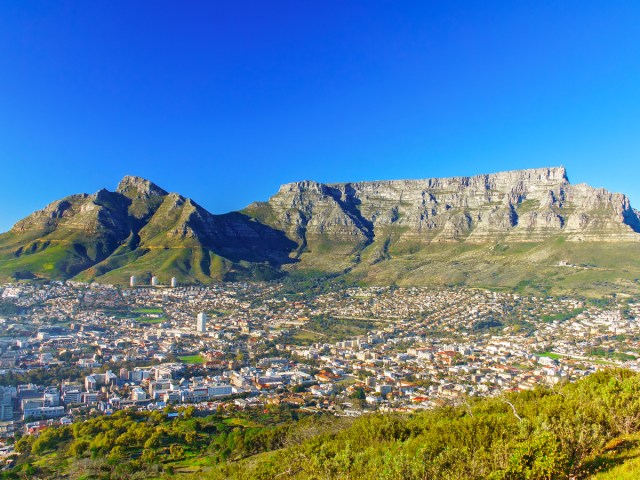
Table Mountain is perhaps South Africa’s most photographed landmark, and for good reason. The two-mile-long elevated plateau overlooks Table Bay and Cape Town, South Africa’s legislative capital and second-largest city. (The iconic mountain even appears on Cape Town’s official city flag.)
When the mountain is covered in clouds, the spectacle is nicknamed the “Tablecloth.” The area surrounding Table Mountain is frequented by hikers and campers — the national park offers over 350 designated routes to the top — while gondolas carry less adventurous sightseers to the top so they can also enjoy the mesmerizing panoramic views that await.
More from our network
Daily Passport is part of Inbox Studio, which publishes content that uplifts, informs, and inspires.

